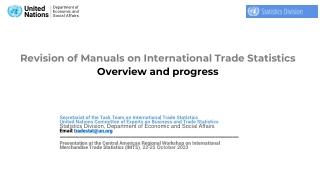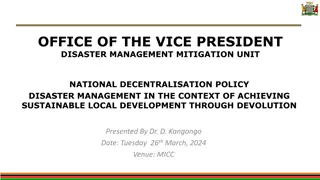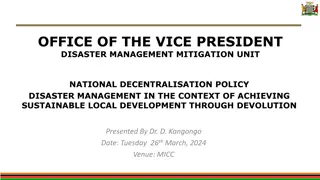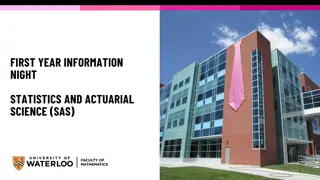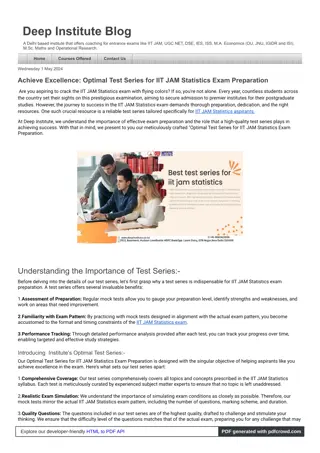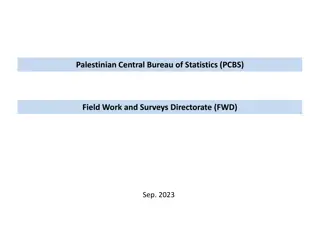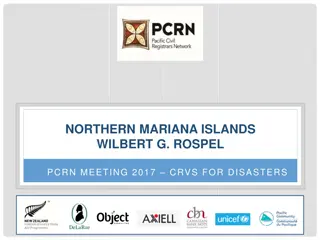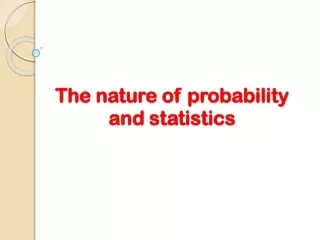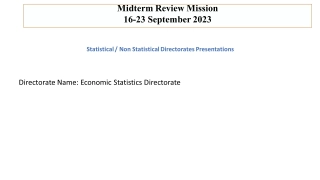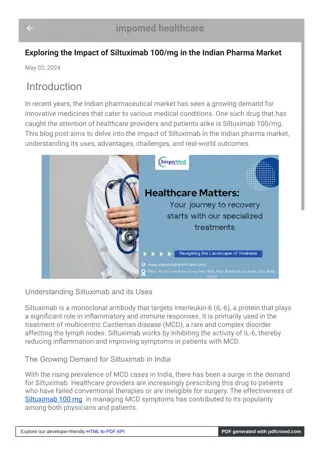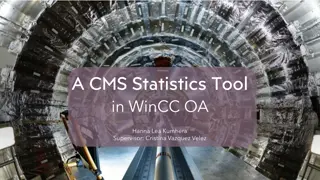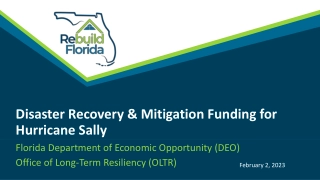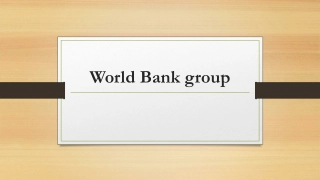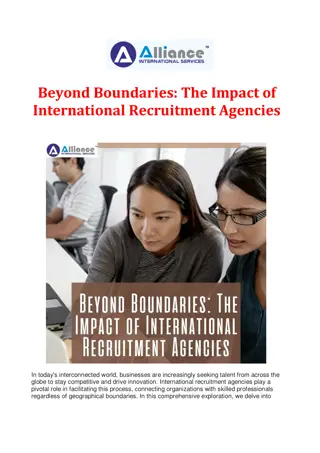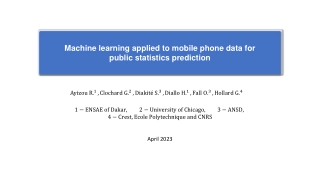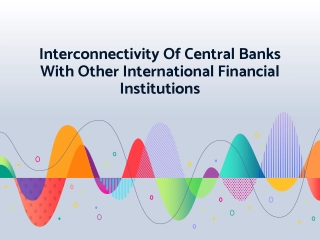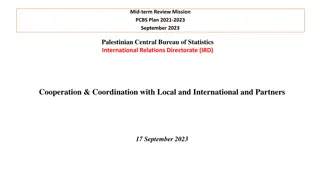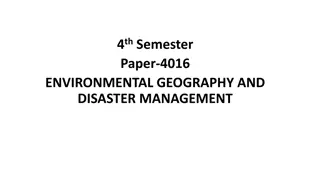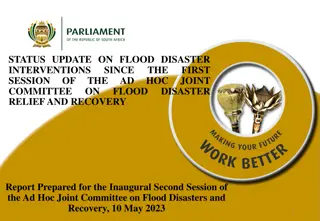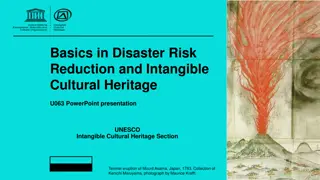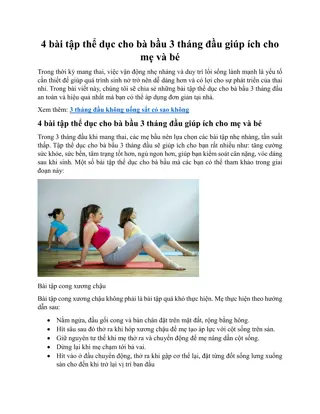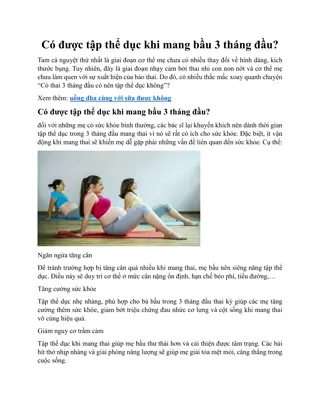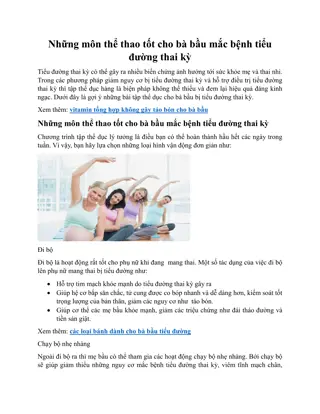International experience in the field of Disaster-related Statistics
Disaster-related statistics encompass data on disaster occurrences, impacts, risk assessment, and post-disaster assessments. The Sendai Framework for Disaster Risk Reduction and the 2030 Agenda for Sustainable Development set global targets and indicators for monitoring disaster risk reduction. Various international frameworks and recommendations aim to translate core concepts into statistical guidelines for effective data production and dissemination.
- Disaster statistics
- International frameworks
- Sendai Framework
- Sustainable Development
- Statistical recommendations
International experience in the field of Disaster-related Statistics
PowerPoint presentation about 'International experience in the field of Disaster-related Statistics'. This presentation describes the topic on Disaster-related statistics encompass data on disaster occurrences, impacts, risk assessment, and post-disaster assessments. The Sendai Framework for Disaster Risk Reduction and the 2030 Agenda for Sustainable Development set global targets and indicators for monitoring disaster risk reduction. Various international frameworks and recommendations aim to translate core concepts into statistical guidelines for effective data production and dissemination.. Download this presentation absolutely free.
Presentation Transcript
International experience in the field of Disaster-related Statistics Session 5: Disaster-related Statistics: Overview of international statistical frameworks and guidelines National Workshop on Climate Change and Disaster-related Statistics in Lesotho Ekaterina Poleshchuk 1 November 2023, Maseru, Lesotho
What is Disaster-related Statistics? According to the Disaster-related Statistics Framework: Disaster-related statistics includes, but is not limited to, statistics about disaster occurrences and their impacts. Disaster-related statistics also includes statistical information used for risk assessment and post-disaster impact assessments, which rely on analyses of a variety of sources of data on the population, society, and economy, like censuses, surveys, and other instruments used in official statistics for multiple purposes. 2
The Sendai Framework for Disaster Risk Reduction 2015-2030 The World Conference on Disaster Risk Reduction in 2015 led to adoption of the Sendai Framework for Disaster Risk Reduction 2015-2030 and subsequently a collection of agreed international indicators and terminologies for monitoring its implementation (UNGA, 2015 and UNISDR, 2017). The Sendai Framework: represents a new global consensus on core concepts and targets and overall statistical requirements for disaster risk reduction describes statistics requirements for global monitoring, via the Sendai Framework Monitor for the seven global targets for disaster risk reduction Here 3
The 2030 Agenda for Sustainable Development Goal 1.End poverty in all its forms everywhere 4 indicators under target 1.5 Goal 11.Make cities and human settlements inclusive, safe, resilient and sustainable 3 indicators under target 11.5 Goal 13. Take urgent action to combat climate change and its impacts 3 indicators under target 13.1 4
Statistical frameworks and recommendations Whereas core concepts and indicators for disaster risk reduction for international monitoring have been defined in the Sendai Framework and SDGs, there is a need to translate the agreed concepts and definitions into specific instructions and technical recommendations for production and dissemination of statistics. By the UN Economic and Social Commission for Asia and the Pacific in 2018 By the UN Economic Commission for Europe in 2019 (complement ESCAP DRSF) By the UN Statistics Division in 2022 (includes disaster-related indicators) 5
Thank you Ekaterina Poleshchuk Statistician, SDG and Environment Statistics Unit Early Warning and Assessment Division ekaterina.poleshchuk@un.org www.unep.org United Nations Avenue, Gigiri PO Box 30552 00100 GPO Nairobi, Kenya


